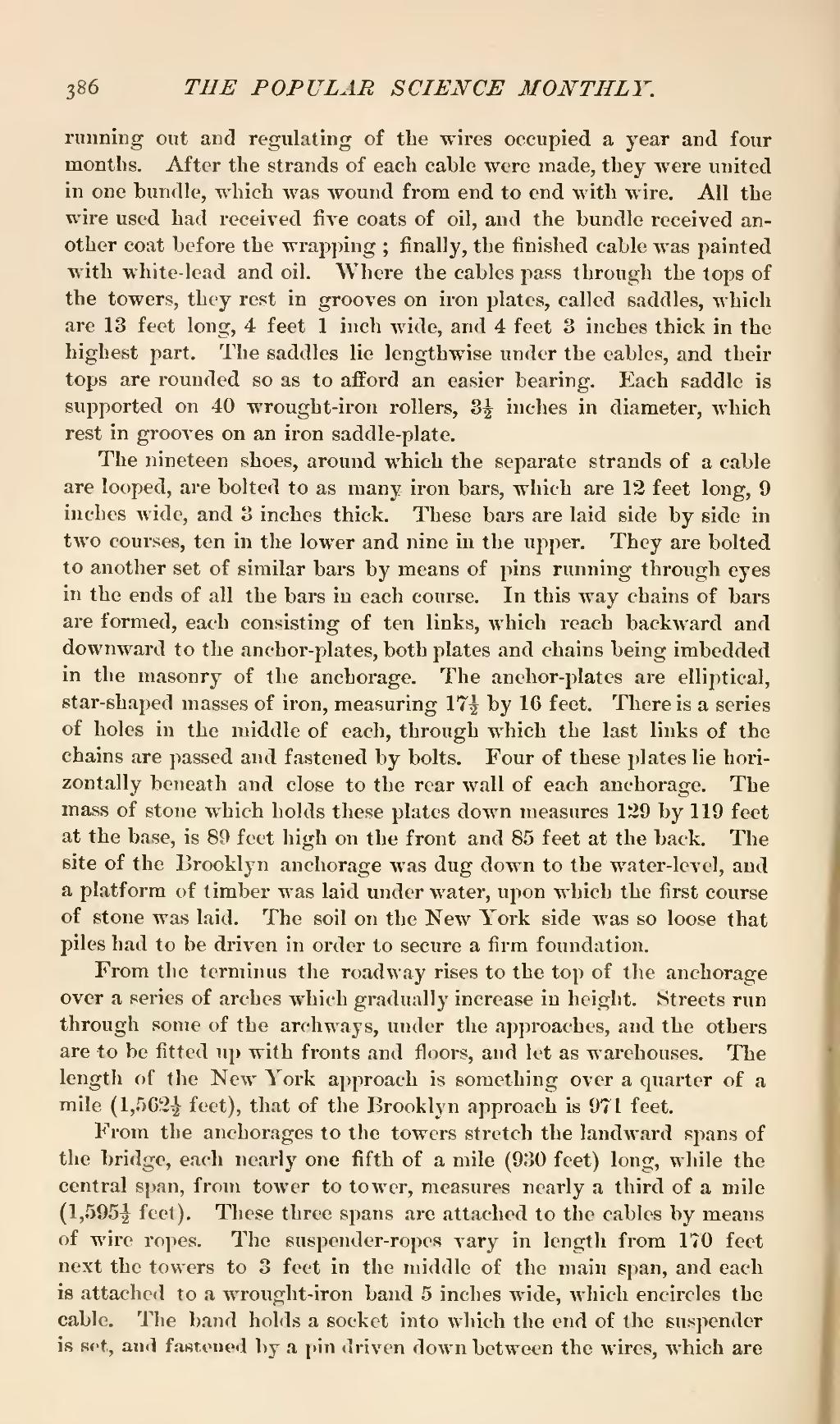running out and regulating of the wires occupied a year and four months. After the strands of each cable were made, they were united in one bundle, which was wound from end to end with wire. All the wire used had received five coats of oil, and the bundle received another coat before the wrapping; finally, the finished cable was painted with white-lead and oil. Where the cables pass through the tops of the towers, they rest in grooves on iron plates, called saddles, which are 13 feet long, 4 feet 1 inch wide, and 4 feet 3 inches thick in the highest part. The saddles lie lengthwise under the cables, and their tops are rounded so as to afford an easier bearing. Each saddle is supported on 40 wrought-iron rollers, 312 inches in diameter, which rest in grooves on an iron saddle-plate.
The nineteen shoes, around which the separate strands of a cable are looped, are bolted to as many iron bars, which are 12 feet long, 9 inches wide, and 3 inches thick. These bars are laid side by side in two courses, ten in the lower and nine in the upper. They are bolted to another set of similar bars by means of pins running through eyes in the ends of all the bars in each course. In this way chains of bars are formed, each consisting of ten links, which reach backward and downward to the anchor-plates, both plates and chains being imbedded in the masonry of the anchorage. The anchor-plates are elliptical, star-shaped masses of iron, measuring 1712 by 16 feet. There is a series of holes in the middle of each, through which the last links of the chains are passed and fastened by bolts. Four of these plates lie horizontally beneath and close to the rear wall of each anchorage. The mass of stone which holds these plates down measures 129 by 119 feet at the base, is 89 feet high on the front and 85 feet at the back. The site of the Brooklyn anchorage was dug down to the water-level, and a platform of timber was laid under water, upon which the first course of stone was laid. The soil on the New York side was so loose that piles had to be driven in order to secure a firm foundation.
From the terminus the roadway rises to the top of the anchorage over a series of arches which gradually increase in height. Streets run through some of the archways, under the approaches, and the others are to be fitted up with fronts and floors, and let as warehouses. The length of the New York approach is something over a quarter of a mile (1,56212 feet), that of the Brooklyn approach is 971 feet.
From the anchorages to the towers stretch the landward spans of the bridge, each nearly one fifth of a mile (930 feet) long, while the central span, from tower to tower, measures nearly a third of a mile (1,59512 feel). These three spans are attached to the cables by means of wire ropes. The suspender-ropes vary in length from 170 feet next the towers to 3 feet in the middle of the main span, and each is attached to a wrought-iron band 5 inches wide, which encircles the cable. The band holds a socket into which the end of the suspender is set, and fastened by a pin driven down between the wires, which are
